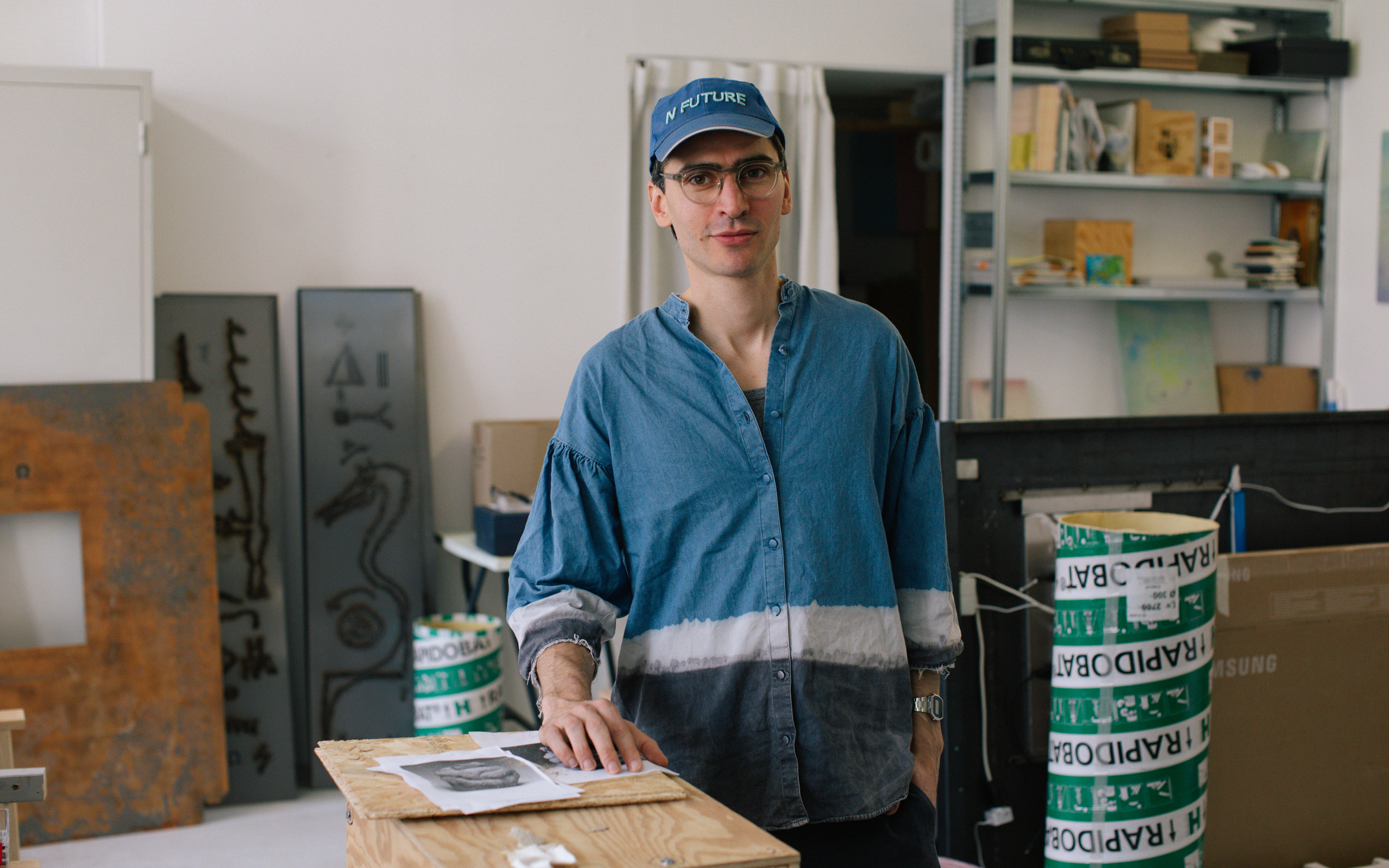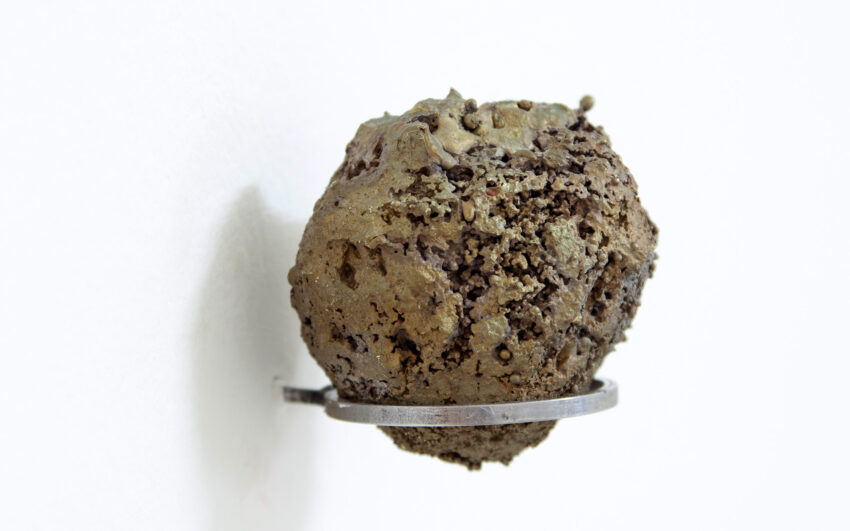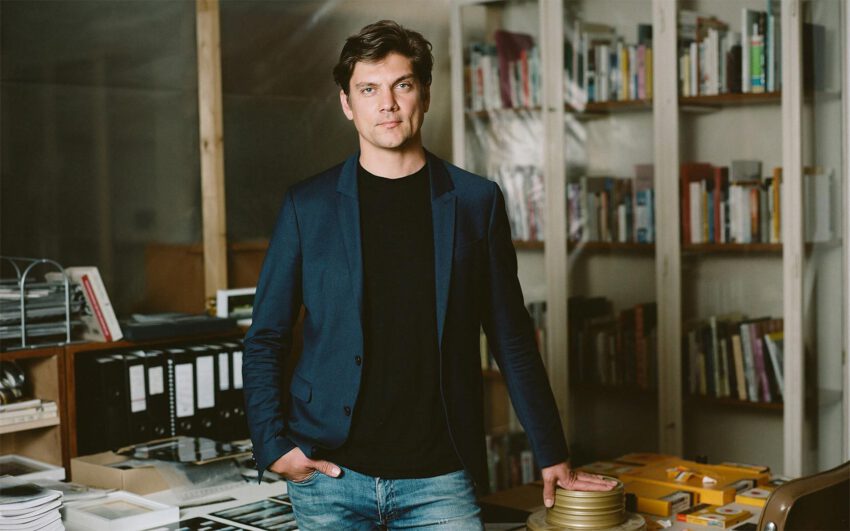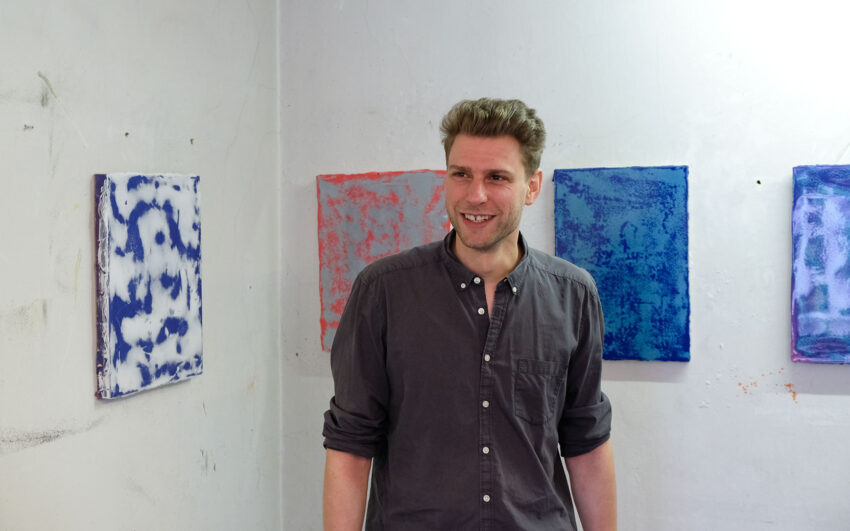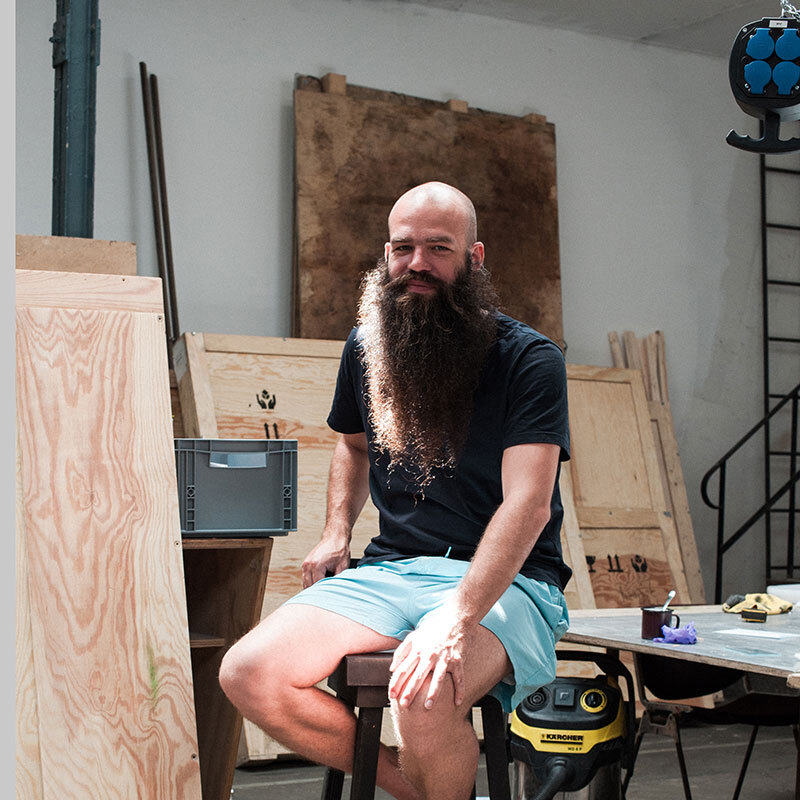Mysterious logos, marble slabs, and digital worlds – Niko Abramidis &NE’s artistic work refers to themes such as power structures, future utopias, and contemporary urban development. Starting from sketches made in a notebook, he creates parallel universes including spatial installations reminiscent of office spaces that play with traditional symbolism of power, a fictious corporate identity, and the appearance of major cities. His drawings, objects, and digital prints reveal humor and diverse references, for example to science fiction, philosophy, and economic processes.
Niko, how did you get into art?
I have always drawn, during classes, in the subway, on walls, on trains, in notebooks, and in books. Drawing is the constant in my life that has always evolved. It is a main part of my work to take the sketchbook and pencil and to make note of things or to draw them.
And how did you realize that you wanted to make art your profession?
My mother was a seamstress and always took me to workshops as a child. It fascinated me how the machines were operated so skillfully, and new things were created. There was the rhythmic rattling of the running machines and there were huge rolls of fabric. The atmosphere in the production facilities still fascinates me today. I then first studied architecture and tried to subvert the strict specifications for gray cardboard models to be delivered weekly with colorful designs, which didn’t go over so well. Then I happened to walk into the art academy and saw people at work and no one telling them what had to be done and how. The freedom was like a turbo drive for me, and I still appreciate being able to realize my own plans, interfaces, and projects.
What does interface mean to you?
An interface is a working environment, usually a machine, with which I cooperate. This can be a welding torch, an embroidery machine, an old plotter, or a waterjet cutter. But also, a spray can or a hand milling machine. Machines are, so to speak, our extended arms, equipped with many capabilities that we don’t have. At the same time, you first have to learn the machine language in order to use it virtuously.
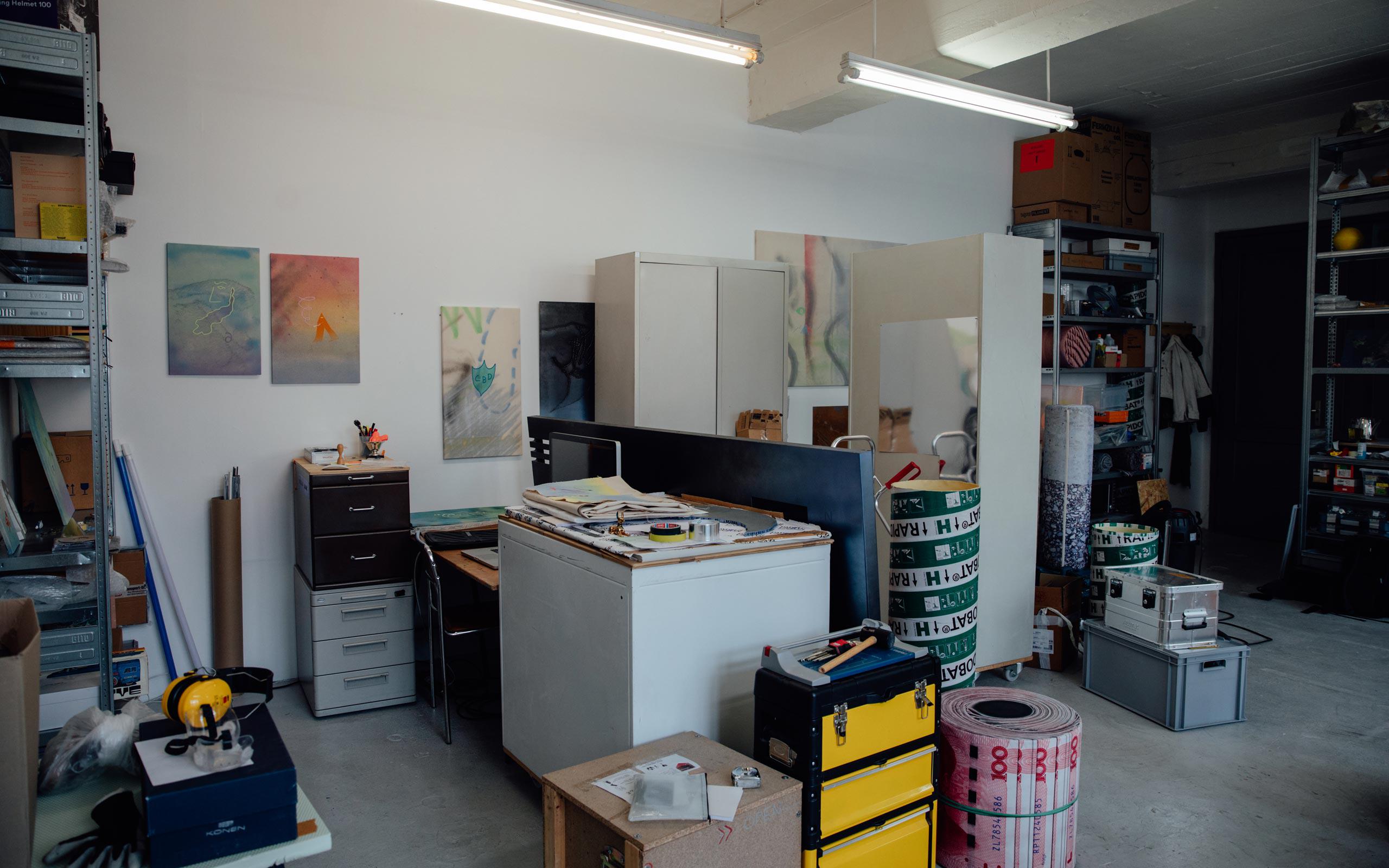
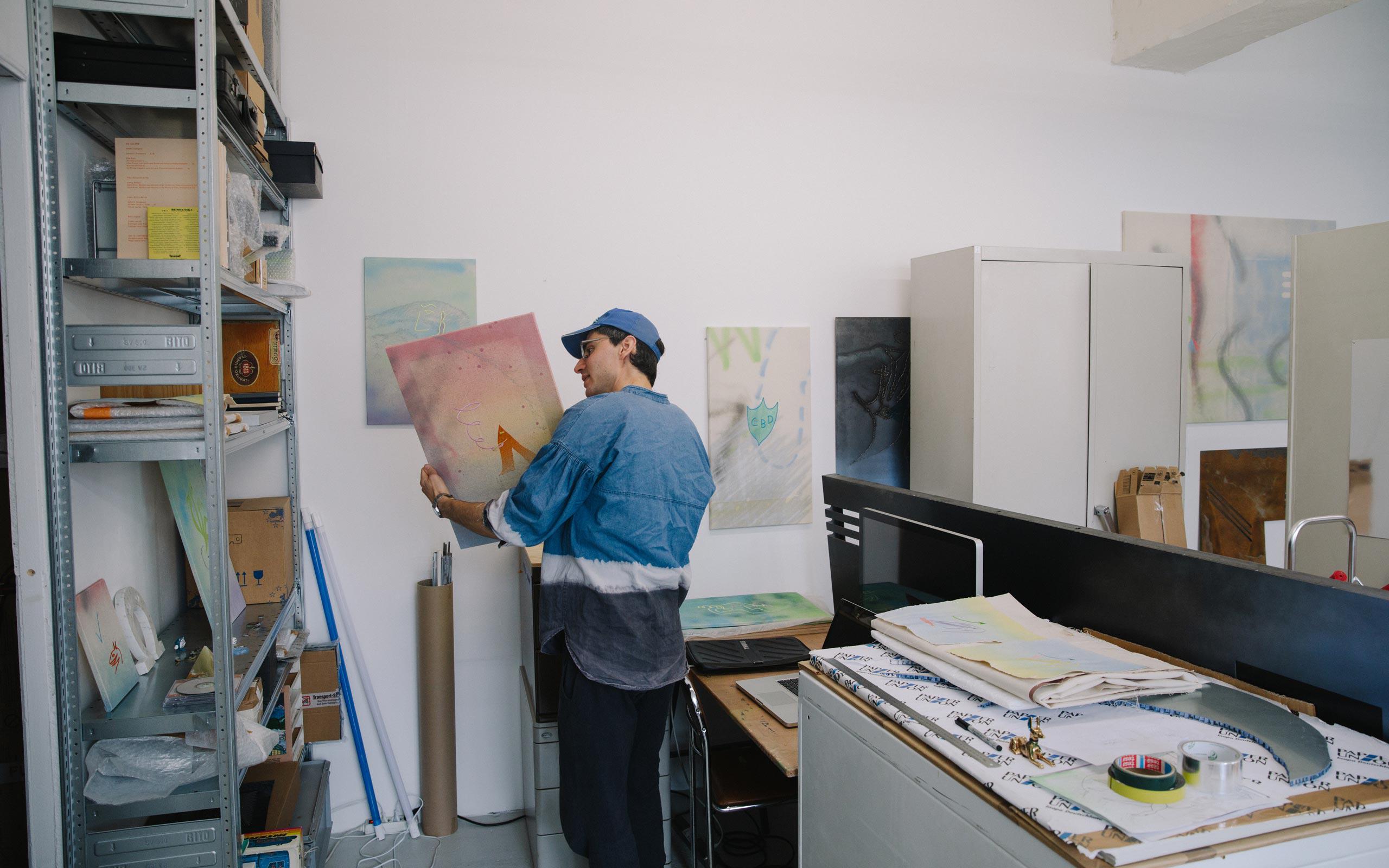
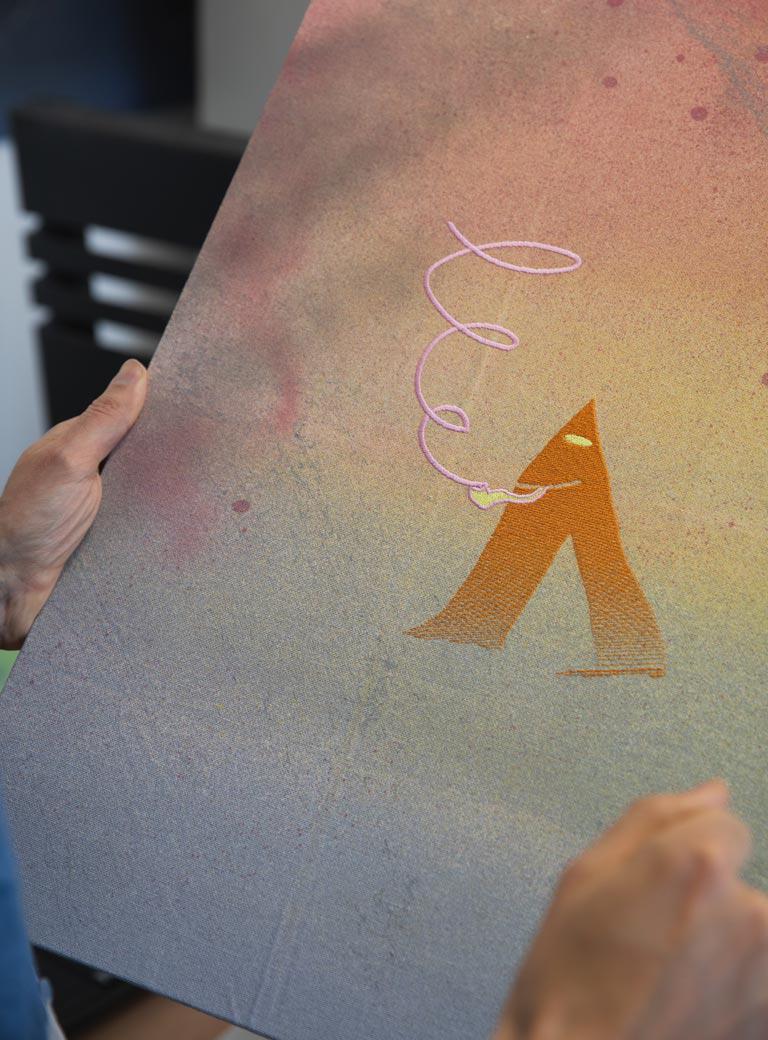
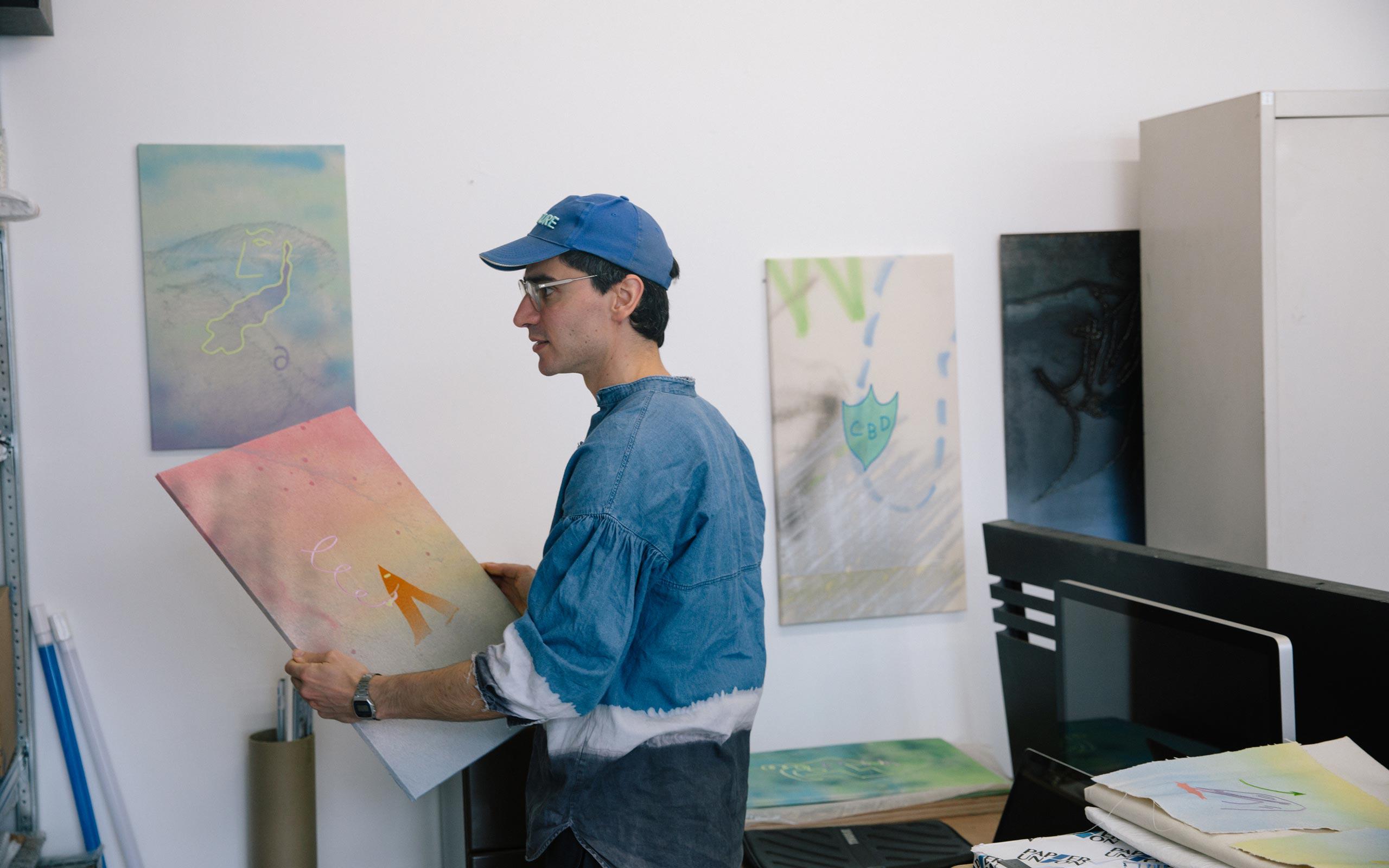
With which works did you then apply to the art academy?
Quite traditional, with drawings and paintings. The painting was very expressive, and I still consider it really good, even in retrospect. At the moment, I’m returning to these painterly works. I work in multimedia, and it is always very phase-dependent for me, with which technique and which medium I’m working at the time.
How did your formal language develop artistically and theoretically?
It developed primarily intuitively from my interest in ever new themes. I am interested in my topics outside of art history and outside of what you see in museums. So, from the sphere of new technologies, the financial world, optimization strategies. I think that artists have a very special way of discovering the world and noticing certain details that perhaps no one else notices. I often walk the streets of big cities and go to the Central Business Districts to see how things are designed there; what narratives of success are told. For example, you walk into a lobby of a company and then you see image films, logos cut out of stainless steel, marble slabs, insignia of power. Another important influence is science fiction novels and short stories, which I collected and read as a child. This was much more interesting to me in my school days than what there was to read in school. There is also a lot of art in these partly fantastic, partly realistic stories. Sometimes you get the feeling that the stories are almost painted.
What do you men – painted?
Authors like J.G. Ballard and William Gibson develop their very own worlds. By extrapolating technologies, a special picture of the future is created there. At the same time, it is also a reflection on the present and on the psychology of the present. The authors create parallel worlds, like artists, sometimes very pictorially described. This is truly inspiring.
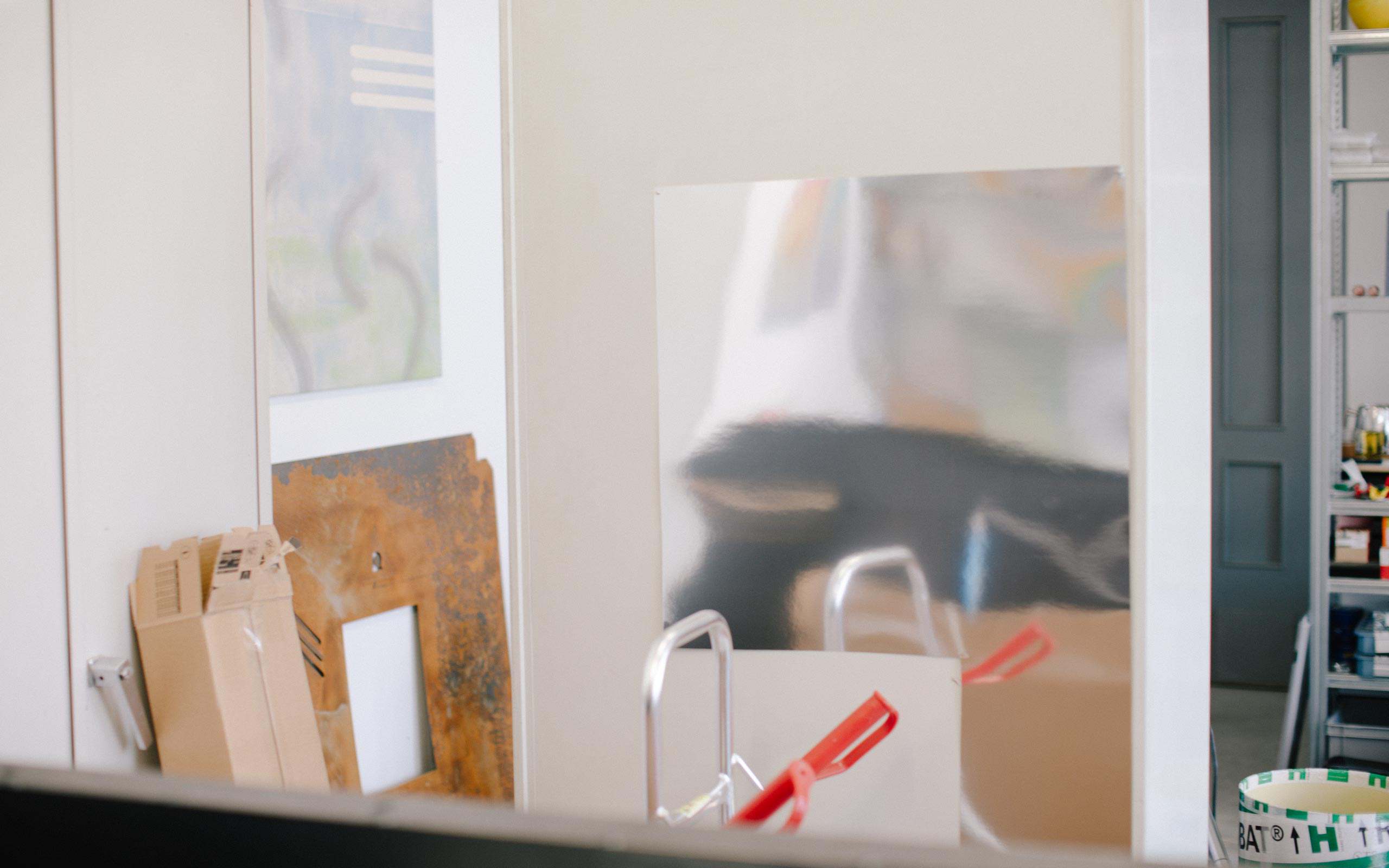
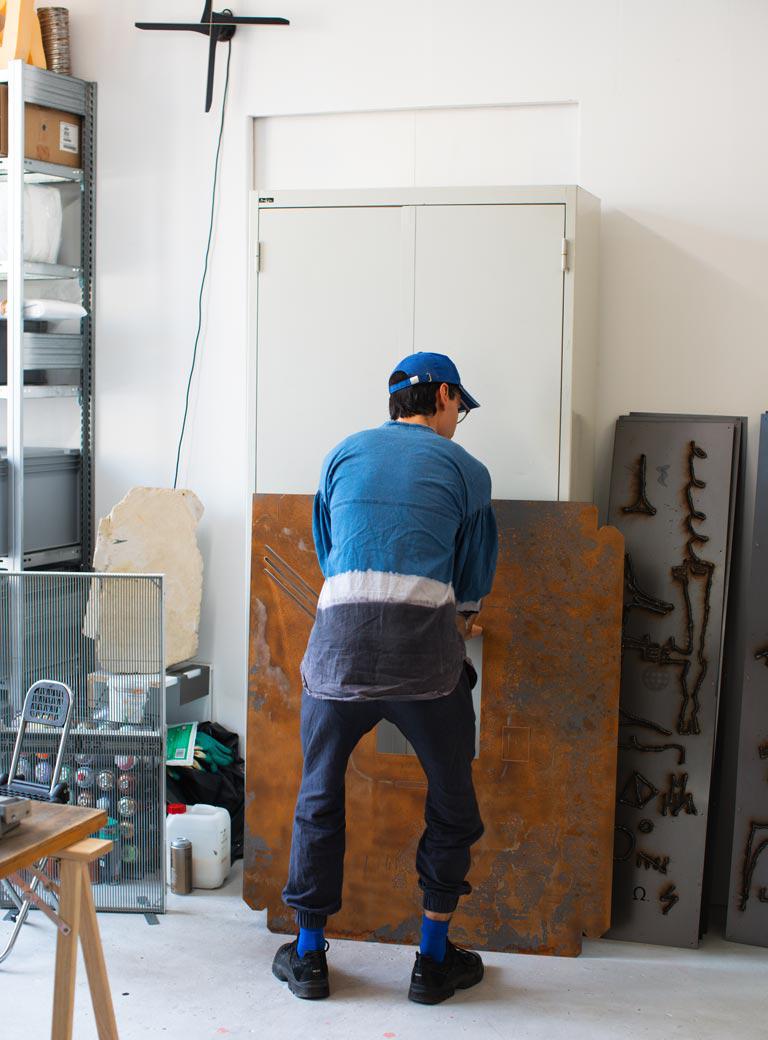
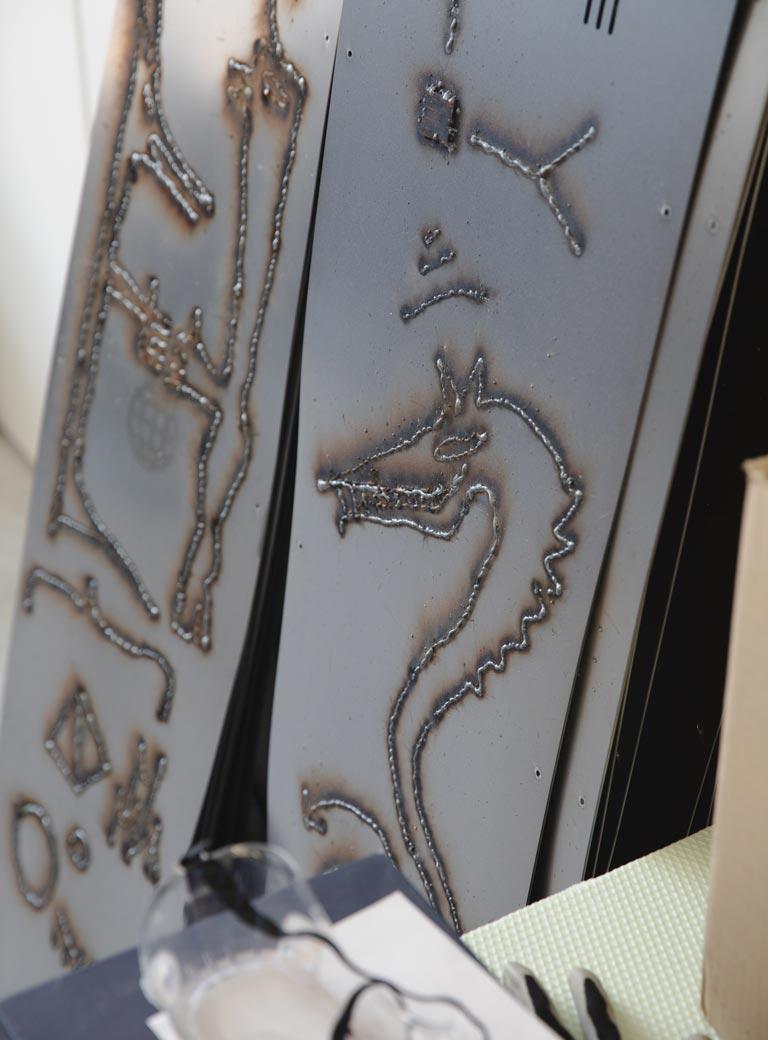
Symbols play an important role in many of the works you’ve created. Why are they so important for you?
Symbols were the origin of our characters and there are still many symbols for both complicated and simple facts. I am interested in how content, atmosphere, i.e., an entire message can flow into a single symbol in a very condensed way and how this can then also be read. That’s why I like to design logos and symbols. They can sometimes be quite funny, but overall, they are completely serious.
What does the &NE in your name actually mean?
My artist’s name has the addition &NE, which indicates that I do not work alone, but am part of a larger entity. I quickly realized that I don’t want to work under my name as a private person, but as a sort of my own company and brand. After all, as an artist I am an entrepreneur and I make that my theme as well. I simply like to switch roles and then be the CEO of fictitious companies, an external controller, and a work-refusing employee. I also develop overarching corporate identities for various groups of works. Even though I do most things myself in the studio or workshop, I still feel that a certain degree of automation and workshop production is necessary, that is, collaboration with machines and high-tech devices and, more recently, AI. This kind of collaboration excites me intellectually.
Are there artists and professors who have had a particular impact on you?
It was already great at the Academy of Fine Arts in Munich, where I started studying, with Markus Oehlen. It existed always a bit of a punk atmosphere there, where it was all about being able to do everything yourself, not limiting yourself or letting yourself be limited by external factors. That you work on your materials yourself, for example, that you use found materials, make your own clothes, and so on. And that’s how I started to develop my own corporate identity, with outfits and everything and try out everything myself in the workshop. In Munich I learned that as an artist you don’t just sit alone in the studio, but look around broadly, research and use new production methods, look at workshops and so on.
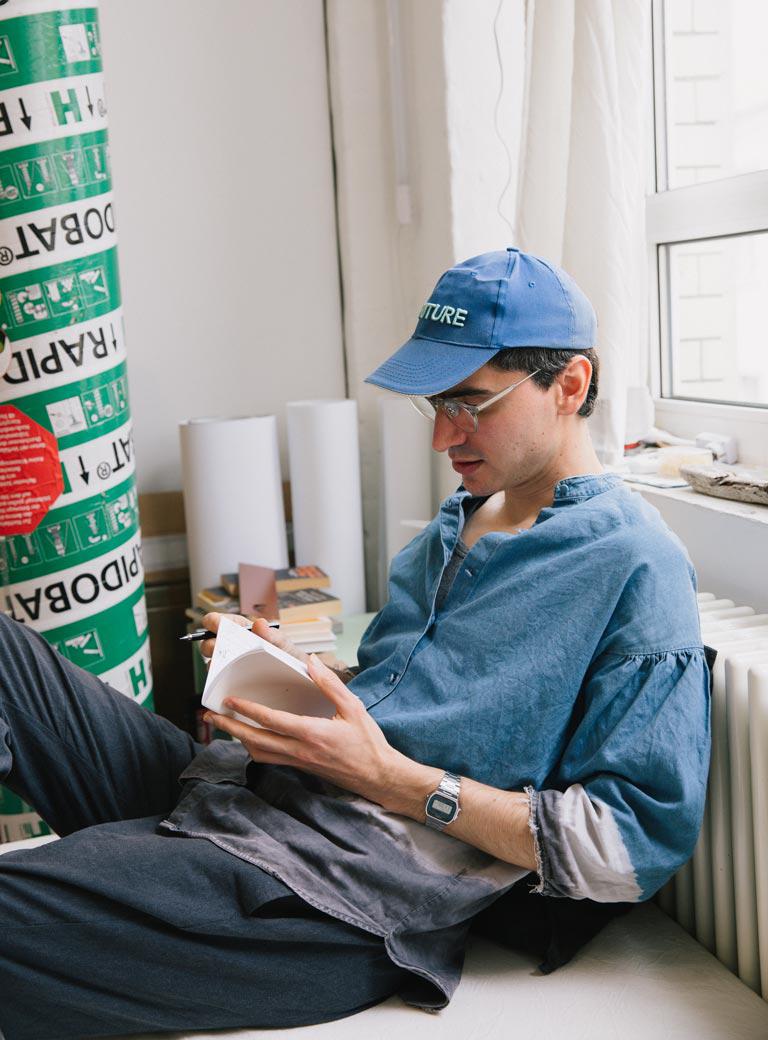
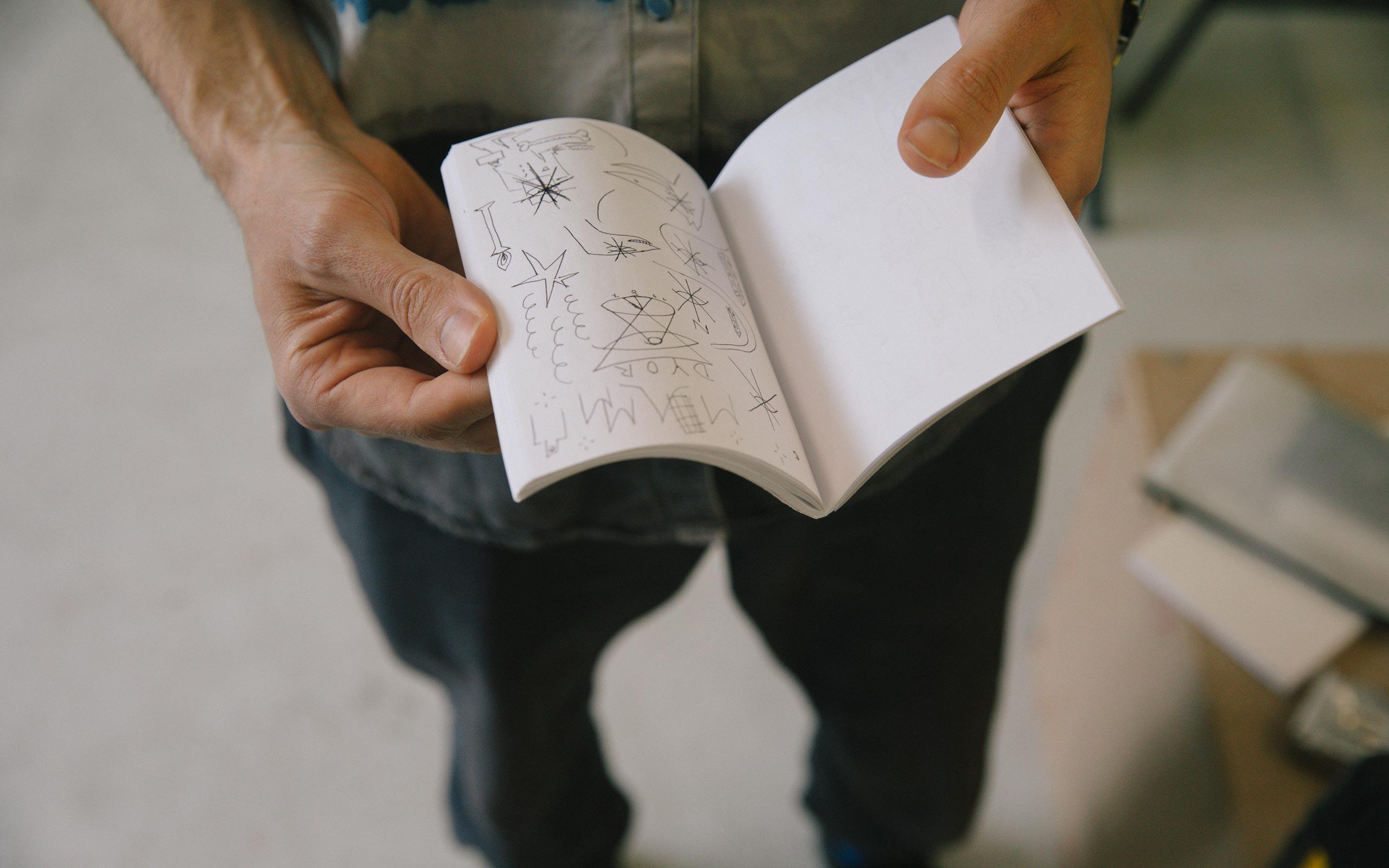
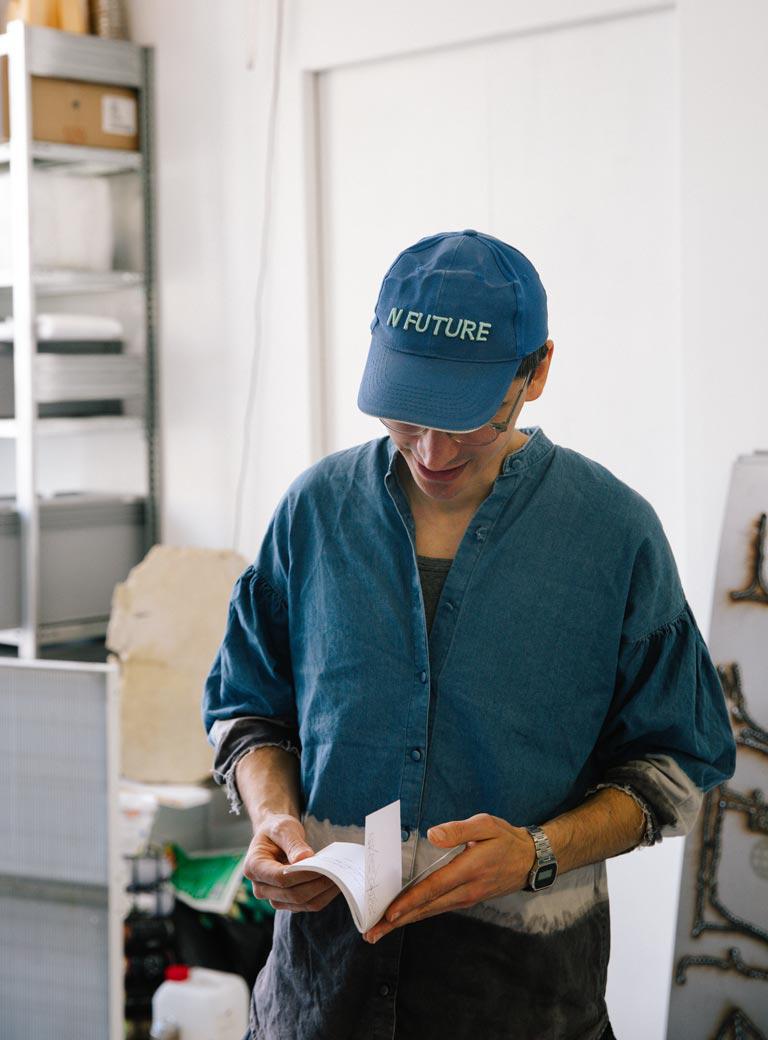
How were your first exhibitions?
I simply stepped out with my art and worked very spontaneously and experimentally. I always considered it good to respond to the particular place and to the visitors, to transform spaces. Even now, as an artist, I see myself as an entity that cannot exist exclusively in the gallery or in established structures, but rather as someone who works in different places in society. As soon as I see an empty space or notice specific details, ideas immediately arise about what could be done with it.
What early exhibition shaped your later practice?
That was during my time at the art academy, when I used empty store premises in Munich as an interim use to sell an edition of plotted drawings as shares for my existence as an artist. That worked out amazingly well, also financially. At the time, while researching interesting machines, I had discovered very good pen plotters from the 1980s that were formerly used by engineers and architects. They were insanely expensive back then, but from the late 1990s they were no longer needed, and I bought them for a few Euros, modified the connectors to make them compatible with current computers, and used them to draw my sketches. I was fascinated by the fact that these pen plotters don’t print in the conventional sense, but actually move pens across the paper and they actually trace my drawing. I was then able to use it to produce the stock in print runs. Because of the pens, which don’t always emit the same amount of ink, each share has a unique character. The series of shares has been with me ever since. I regularly issue new ones and already have a very good base of Vision Equity shareholders. When you start your career as an artist, you have no capital and no infrastructure, so I was able to improve my situation quickly.
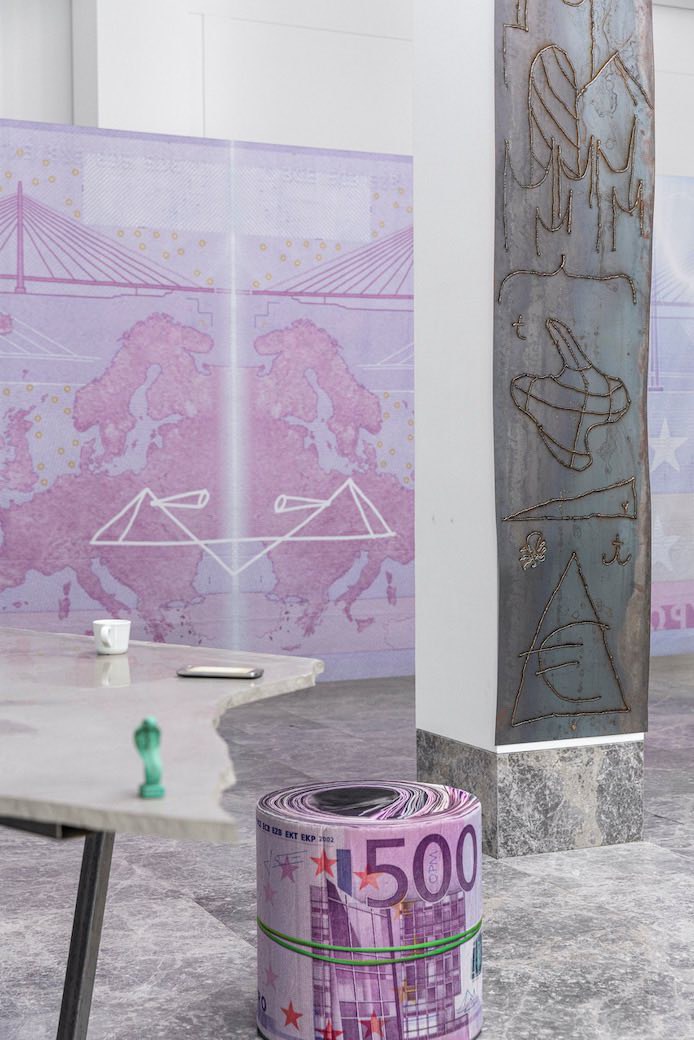
Exhibition view Vision HQ, 2021, Brienner Strasse 12, Courtesy of max goelitz, Copyright of the artist, Photo: Dirk Tacke
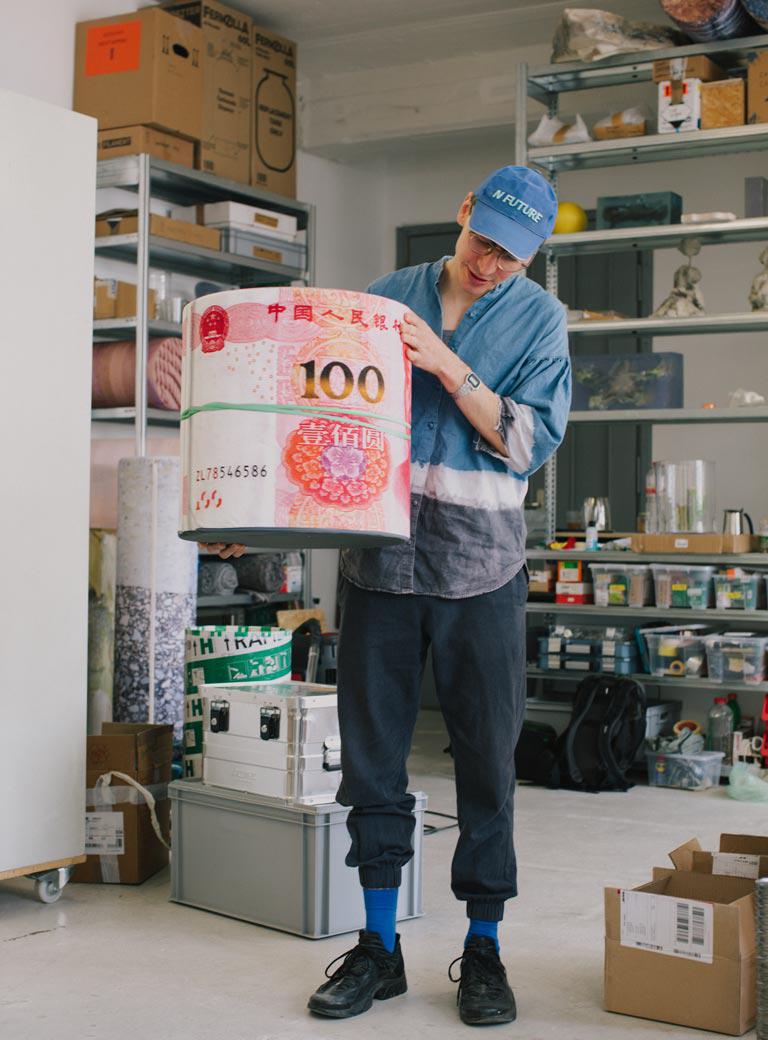
What was the decisive point for your move from Munich to Berlin?
Munich simply became cramped as a city and very expensive. It’s not easy to survive there as an artist and you don’t find much space and room for your artistic work. In Berlin there is a much better infrastructure of studios, workshops, and institutions. It was quite a pragmatic decision. Places that artists need were just too limited in Munich, you couldn’t grow at all. In Berlin I found a great place and I’m very happy to be here now.
Did your strong interest in economic contexts arise from your studies or in Munich because it is a business metropolis?
Munich is a small city. In just a few minutes, you can change the context completely and gain different perspectives. Simply by visiting a narrow café in Maxvorstadt, you could overhear three different conversations from various business sectors. That was partly shocking, but also inspiring. I’m particularly interested in the dirty details behind the beautiful facade.
What projects are you working on at the moment?
Currently I am working on a larger series of paintings that deal with archaic motifs from Greek mythology, the Odyssey and its monsters. The images are partly generated with artificial intelligence, partly with spray paint and brush. For me, these images are also testimonies from the future, when our civilization, like that of the Egyptians, the ancient Greeks, the Mayans, and the Incas, will have perished at some point. There is a large time horizon at stake here. Ancient temples appear in these works, and mythological beings. You can’t look into the future without looking at the past. In some sense, my way of working is a future archeology.
What are your current exhibitions?
My exhibition DYOR – U. Do your own research, You is still running in Munich. This is an important topic for me. It’s not just about research and investigation, it’s about the relationship between fake and truth. The exhibition is in a very stately Gründerzeit villa, the Center for Advanced Studies. It’s a place where scholars from different fields work together on different foci in an interdisciplinary way. It is a wonderful privilege for me to enter into an exchange with scientists through my exhibition. My approach as an artist is not so far removed from current endeavors in science. The central question is what role humans will be playing in the future, what systemic conditions are currently being created, where the dangers lie, in other words, in general, the human component in connection with technologies. In the fall I am exhibiting large-scale new panels at max goelitz in Munich, in a group show with Jeremy Shaw, Nicolas Lamas, Helga Dóróthea Fannon, and Haroon Mirza. In October I have a solo exhibition at the Salzburger Kunstverein.
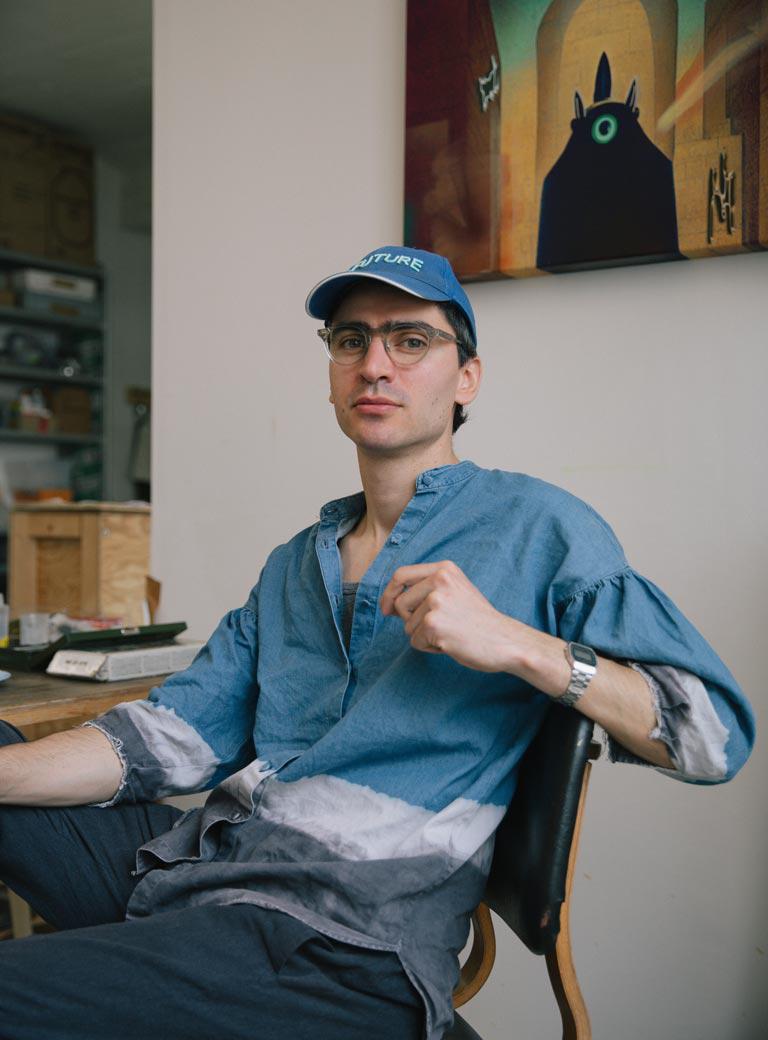
Materiality is an important element of your work. How do you combine the material with the digital and with new technologies?
A marble object has venerable feel and an aura. At the same time, my marble cut-outs radiate a looseness too, because they arise directly from quick hand sketches. Many of my works move in this area of tension. I think a lot about what certain materials mean in terms of cultural history, what they radiate, and which materials are suitable for which works. It is then a matter of charging materials with thoughts and ideas, sometimes also of reevaluating them. I have an affinity for raw materials that come from certain contexts and that I then process in my artistic context. I am interested in both traditional crafts and innovative technologies. It is my dream to bring these two worlds together in a kind of factory.
You dream of a factory concept?
Yes. It could be an old or new building – a factory site already half derelict would actually be optimal. I imagine that a larger site would have lots of workshops, gardens, desks, libraries, and machines going on. Unfortunately, these open spaces and exciting places where production takes place, ideas are exchanged, are increasingly disappearing. This is also due to our economic system, the concept of growth, where everything has to be more productive all the time. Not only does quality and durability of products suffer, but artisanal techniques are continuously being lost. I am interested in decentralization as opposed to globalized megastructures. This conviction shapes my art. For example, I’m also working on a New World Network, a system of nodes distributed across different households that form a decentralized network, blockchain-based. I’m interested in structures where people are not subjects, but actively shape things both themselves and with each other.
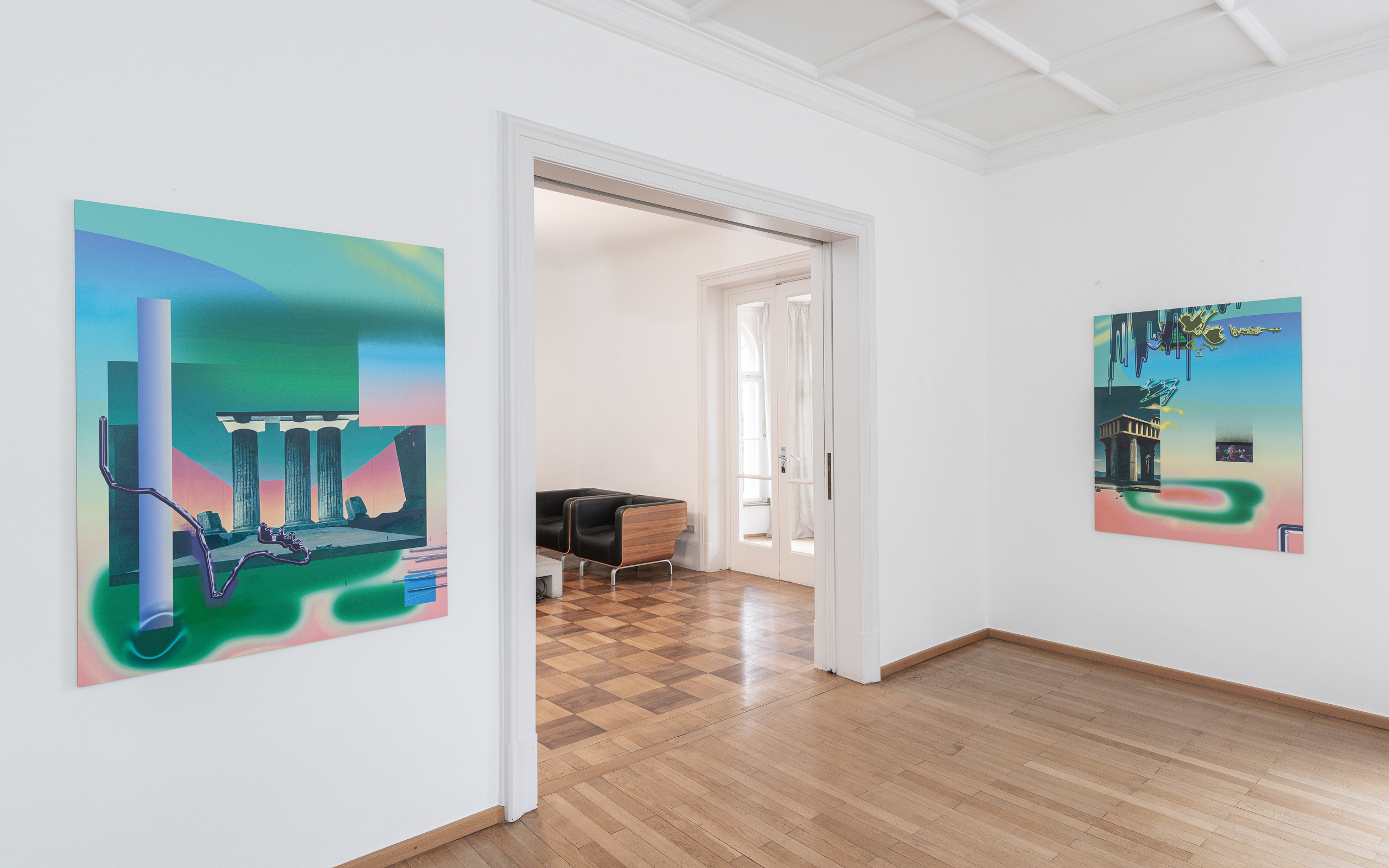
Exhibition view DYOR U, 2023, Center for Advanced Studies LMU, Courtesy of max goelitz, Copyright of the artist, Photo: Dirk Tacke
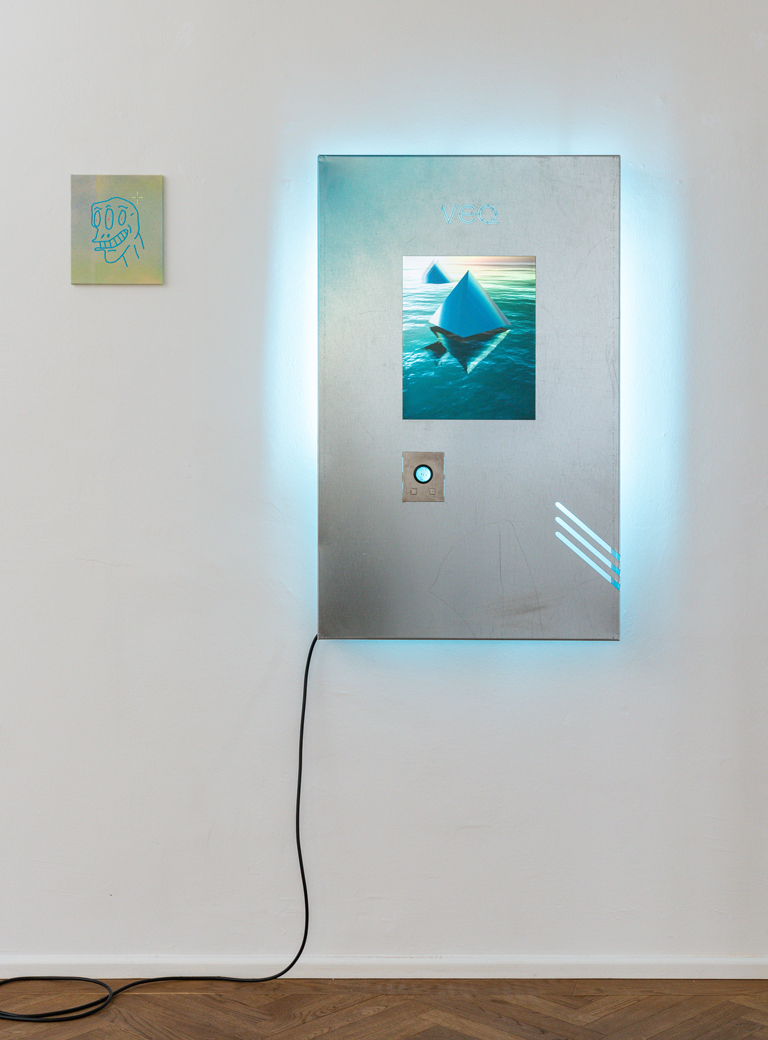
Exhibition view DYOR U, 2023, Center for Advanced Studies LMU, Courtesy of max goelitz, Copyright of the artist, Photo: Dirk Tacke
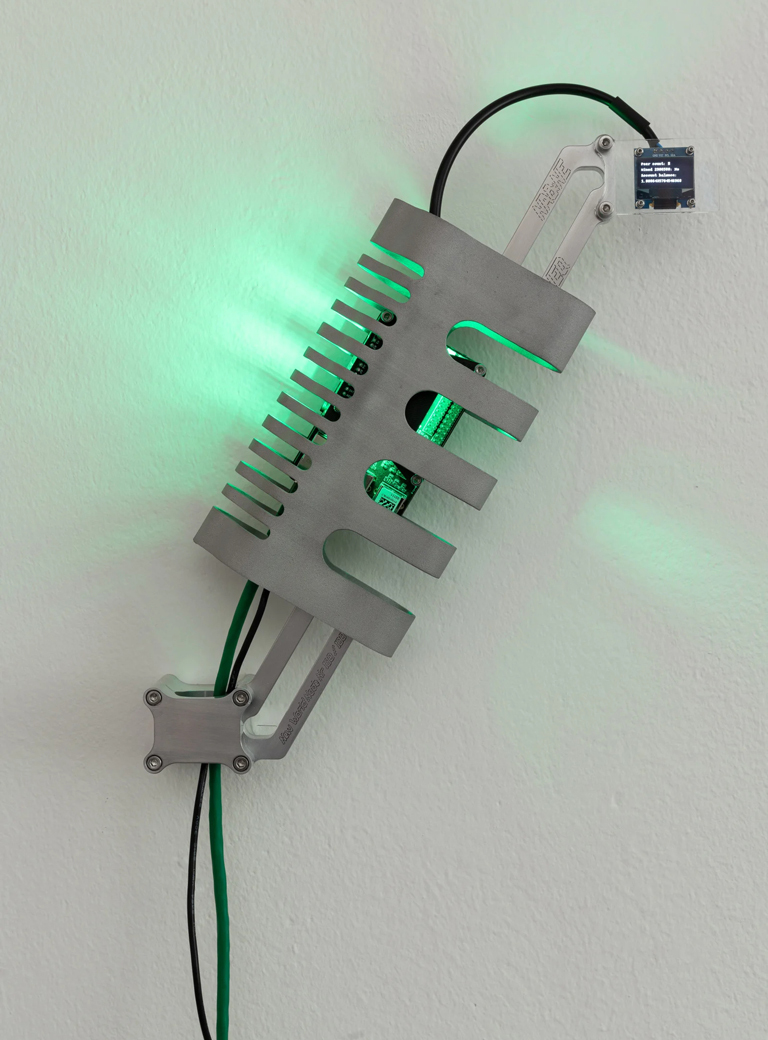
New World Node, Niko Abramidis &NE, 2022, Courtesy of max goelitz, Copyright of the artist, Photo: Dirk Tacke
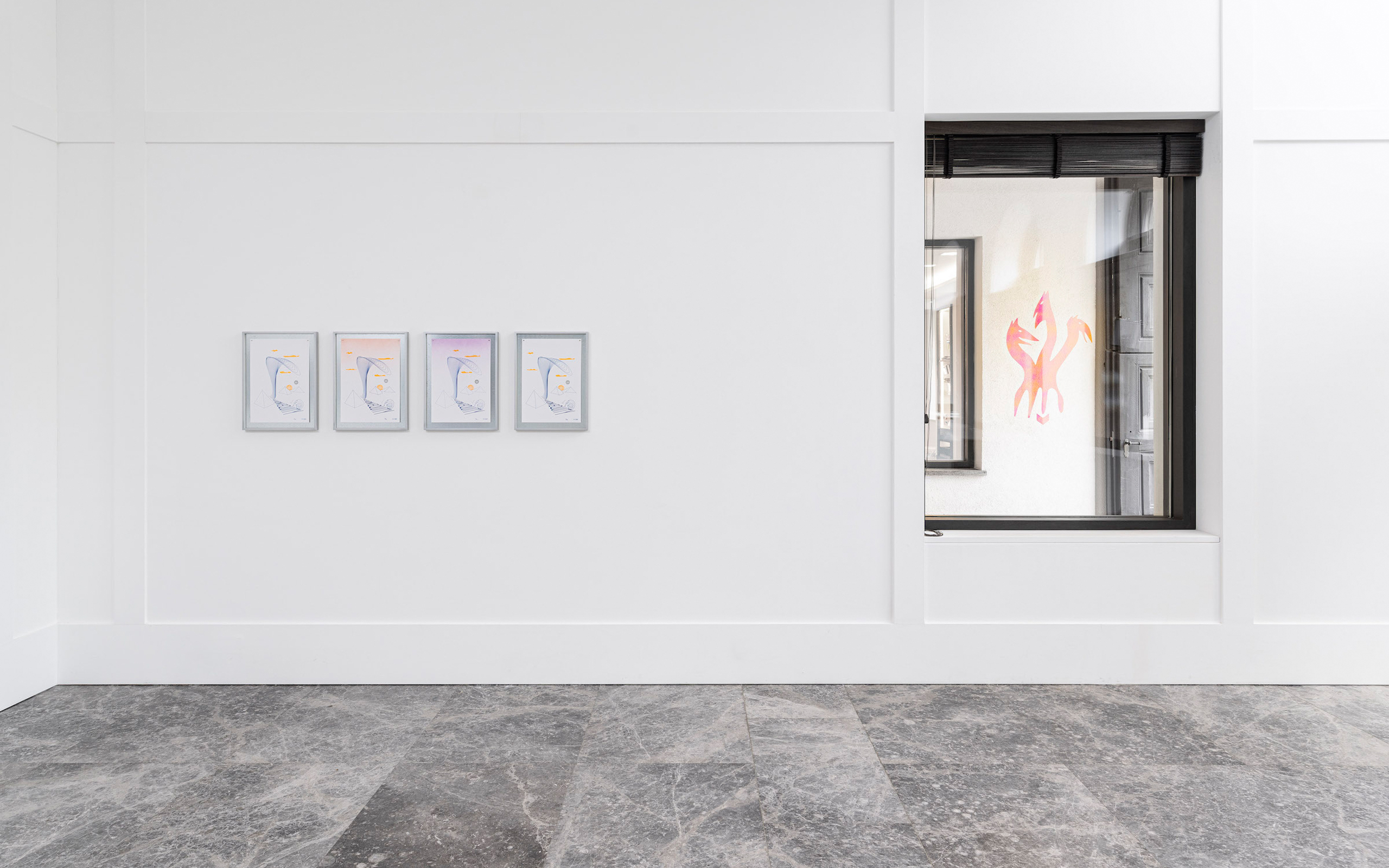
Exhibition view Vision HQ, 2021, Brienner Strasse 12, Courtesy of max goelitz, Copyright of the artist, Photo: Dirk Tacke
Interview: Kevin Hanschke
Photos: Katharina Poblotzki


